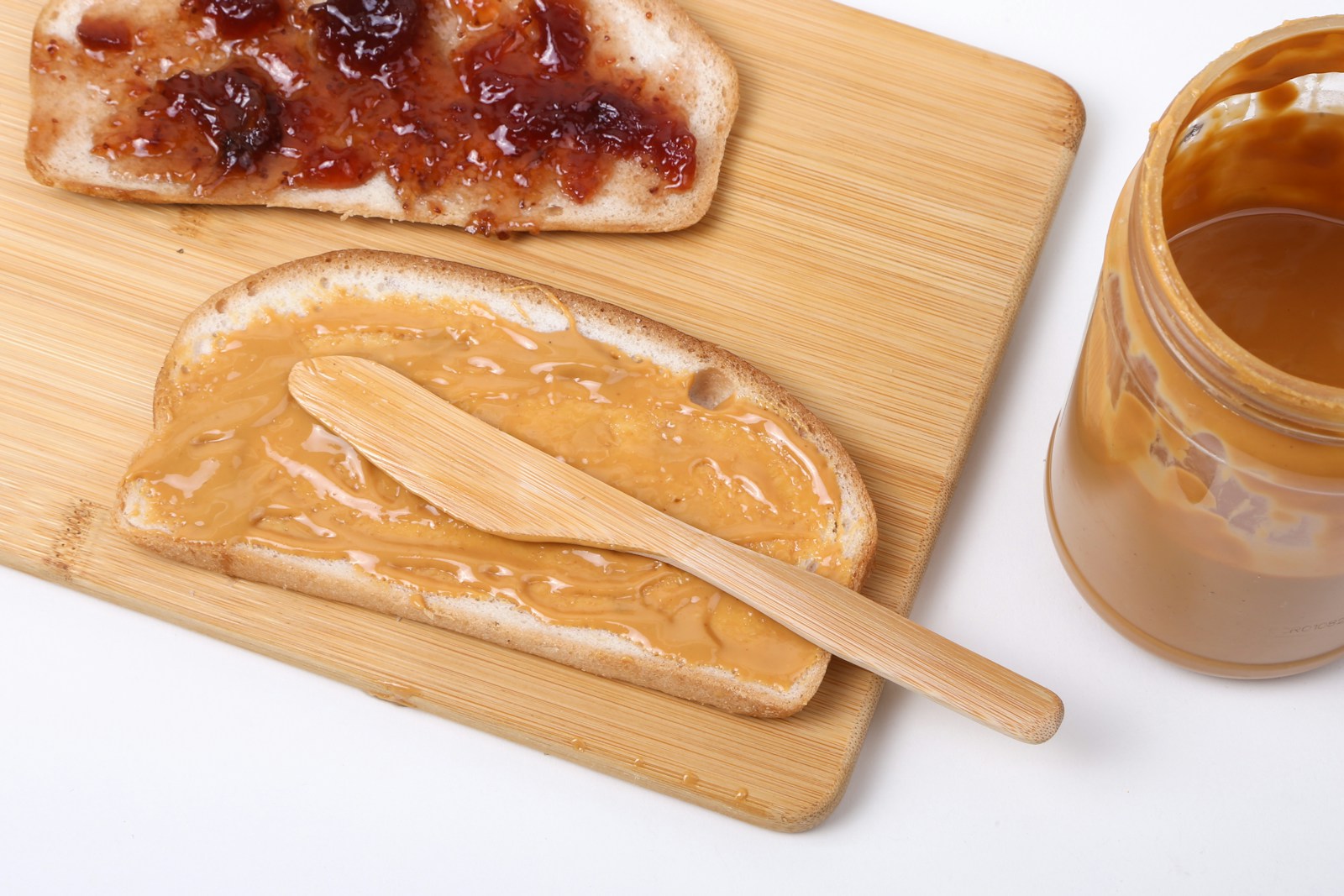
Peanut butter is often praised as a healthy snack option, but is Jif peanut butter good for a diabetic? The short answer is yes, but it depends on portion size and the specific type of Jif peanut butter. With its low glycemic index and healthy fats, natural peanut butter can help stabilize blood sugar. However, certain varieties may contain added sugars or oils that aren’t ideal for managing diabetes. Understanding what’s inside the jar can make all the difference for anyone watching their blood sugar levels.
Nutritional Profile of Jif Peanut Butter
Jif Peanut Butter is a pantry staple for many, but what does it bring to the table nutritionally? If you’re wondering whether it’s good for managing diabetes, you’ll want to understand its calories, macronutrients, and the vitamins and minerals packed into each spoonful. Let’s break it all down.
Calories and Macronutrients
Each serving of Jif Peanut Butter, which is typically 2 tablespoons (32 grams), contains 190 calories. This makes it a calorie-dense food, so portion control is key, especially for those managing diabetes.
Here’s how the macronutrients stack up in regular Jif Peanut Butter:
- Protein: 7 grams per serving. The protein content makes it a satisfying option, slowing digestion which helps avoid abrupt sugar spikes.
- Fat: 16 grams per serving. This includes a mix of unsaturated fats (heart-healthy) and saturated fats.
- Carbohydrates: 8 grams per serving. Out of this, about 3 grams are sugars. The carbohydrate content is relatively low, but added sugars should always be watched for diabetics. Opt for varieties like Simply JIF, which has only 2 grams of sugars.
These macronutrient ratios—especially the higher protein and fat—help make peanut butter a slow-absorbing energy source. However, added sugars and oils in some varieties might not be ideal for regulating blood glucose. For a detailed nutritional breakdown, you can check the Jif Creamy Peanut Butter official page.
Vitamins and Minerals
Besides macronutrients, Jif Peanut Butter provides several essential vitamins and minerals. Here are the major ones:
- Vitamin E: An antioxidant that supports immune function and skin health.
- Niacin (Vitamin B3): Helps convert food to energy, particularly beneficial for energy balance.
- Magnesium: Supports nerve and muscle function and helps regulate blood sugar levels.
- Potassium: 184 mg per serving. Potassium helps balance body fluids and can counteract some negative effects of sodium.
While these nutrients are helpful, keep in mind that Jif Peanut Butter also contains sodium (about 140 mg per serving for the regular version). People with diabetes should pair it with lower-sodium foods to maintain a balanced diet. For another perspective on how peanut butter can fit into a diabetic lifestyle, you can explore Diabetes and Peanut Butter Research.
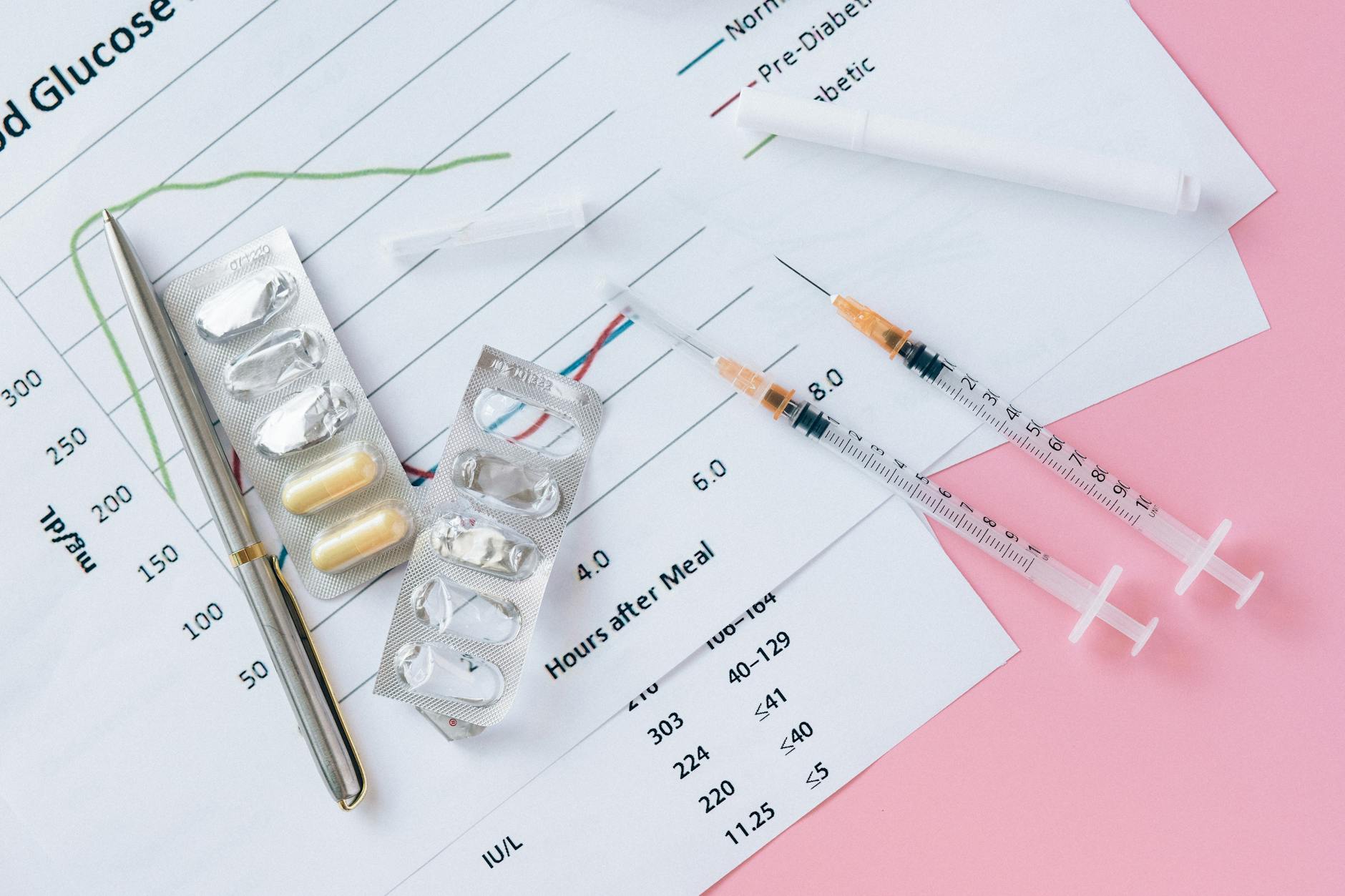
Photo by Nataliya Vaitkevich
To round it out, Jif Peanut Butter provides small amounts of calcium and iron, further contributing to its nutritional appeal.
Understanding the nutritional profile of Jif Peanut Butter can help you decide whether it fits into a diabetes-friendly diet. It’s clear that while it offers several beneficial nutrients, being aware of added sugars and mindful portion sizes is crucial for blood sugar management.
Glycemic Index and Its Importance
Understanding the glycemic index (GI) is crucial for managing diabetes. The GI ranks foods based on how they affect blood sugar levels. Foods are scored on a scale of 0 to 100, with lower scores indicating a smaller impact on blood sugar. For diabetics, choosing low-GI foods is vital as they release glucose more slowly and steadily, helping to maintain stable blood sugar levels. Peanut butter, a common staple, often falls into the low-GI category due to its nutrient composition.
Glycemic Index of Jif Peanut Butter
Jif Peanut Butter boasts a GI of 14, placing it firmly in the “low-GI” category. This means it has minimal impact on blood sugar levels, largely thanks to its high protein and fat content, which slow carbohydrate absorption. For someone managing diabetes, this low score makes Jif a relatively safe option when consumed in appropriate portions.
However, not all Jif products are created equal. Variants like regular Jif Peanut Butter may include added sugars, which, while not significantly raising the GI score, could lead to incremental glucose spikes. For a full glycemic analysis of Jif Peanut Butter, visit Glycemic Index of Jif Peanut Butter.
Adding peanut butter to your diet can help control sugar spikes when paired with low-GI foods. For example, spreading it on whole-grain toast or pairing it with vegetables like celery ensures balanced glucose levels throughout the day.
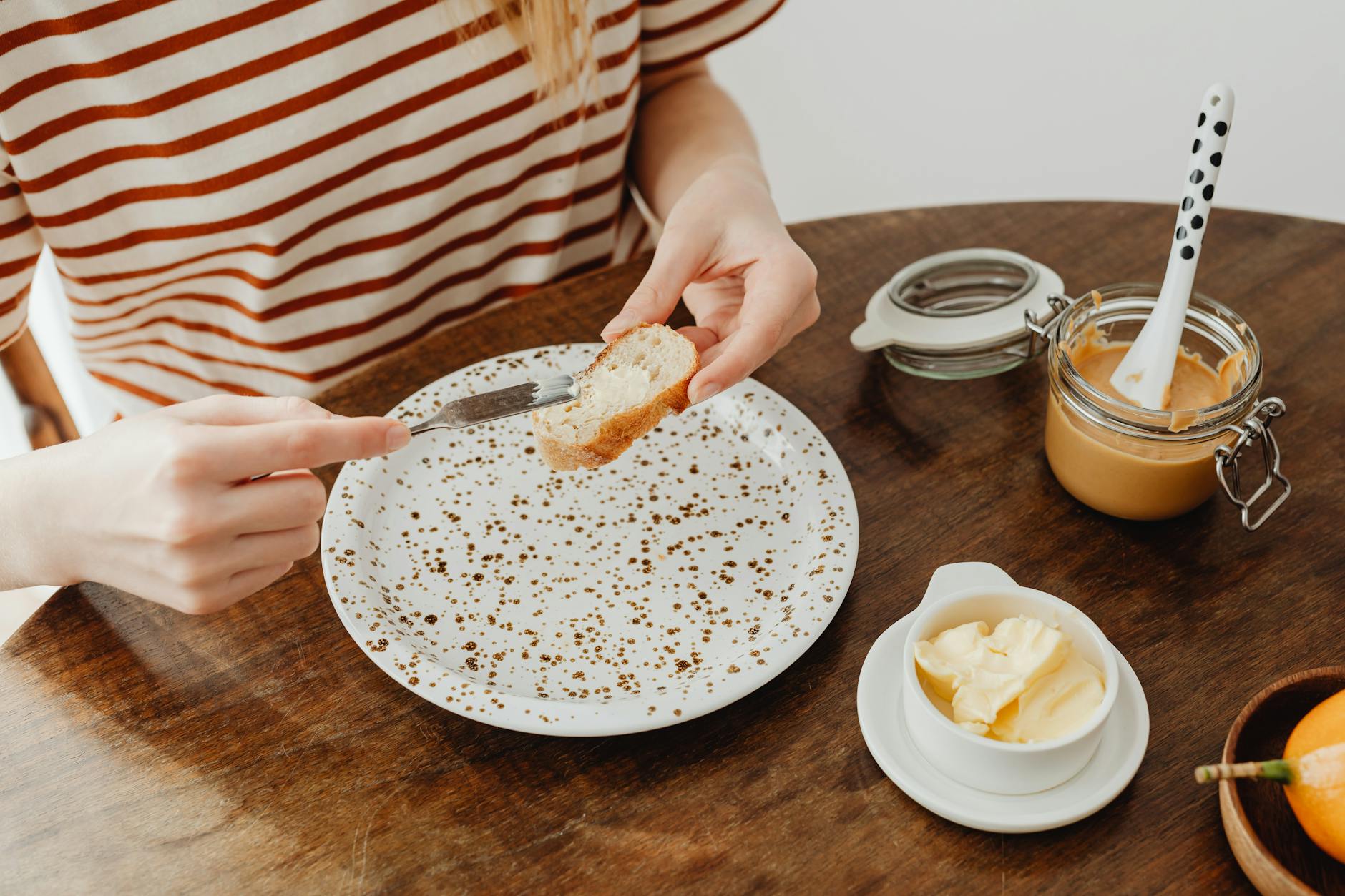
Photo by Kaboompics.com
Comparing with Other Peanut Butters
When compared to other popular peanut butter brands, Jif holds up well in terms of its glycemic index. Most peanut butters, regardless of the brand, fall into the low-GI category—usually between 13-25, depending on additional ingredients like sugar and oils.
- Natural Peanut Butter (without additives): GI around 13-14, very comparable to Jif. This is often considered the best choice due to its lack of added sugars.
- Sugar-Free Peanut Butter: GI of approximately 25, which is still low but slightly higher due to its specific composition. Learn more at Peanut Butter (Sugar-Free).
- Mainstream Brands: Some brands with added sweeteners and oils can push the GI slightly higher, though still typically under 25.
Remember that while GI is important, other factors such as ingredient quality and macronutrient balance also play a role. For diabetics, selecting a peanut butter with fewer unnecessary additives is key. For broader insight into peanut butters’ health benefits and glycemic impact, the Signos article on Glycemic Index provides a detailed breakdown.
Choosing a peanut butter that aligns with your health goals doesn’t have to be complicated. Whether it’s Jif or another low-GI option, the key is balance, moderation, and attention to detail in the ingredient list.
Benefits of Jif Peanut Butter for Diabetics
For diabetics looking for convenient snack options, Jif peanut butter offers a mix of nutrients that can support health goals. Let’s explore how it benefits the heart, aids blood sugar regulation, and contributes to overall satiety.
Heart Health
Jif peanut butter contains healthy fats that play a key role in maintaining cardiovascular health. Most of the fat present in peanut butter is unsaturated, which helps reduce “bad” LDL cholesterol while boosting “good” HDL cholesterol levels. This balance can lower the risk of heart-related complications, which is particularly important for diabetics who are more prone to cardiovascular issues.
The presence of vitamin E and potassium in Jif peanut butter enhances its heart-protective properties, supporting blood pressure control and reducing inflammation. However, regular versions of Jif may also contain added sodium, so it’s wise to opt for low-sodium options if heart health is a primary concern.
Blood Sugar Control
Peanut butter, including Jif, has a low glycemic index (GI) of 14, making it a smart choice for diabetics. Low-GI foods release glucose slowly, which helps maintain stable blood sugar levels. This is especially significant for those managing diabetes who need to avoid sugar spikes.
The rich protein and healthy fats in Jif work together to slow digestion, further preventing rapid increases in blood glucose. However, checking the label for added sugars is essential when choosing a variant. For more insights into how peanut butter affects blood sugar, visit Medical News Today’s article on diabetes and peanut butter.
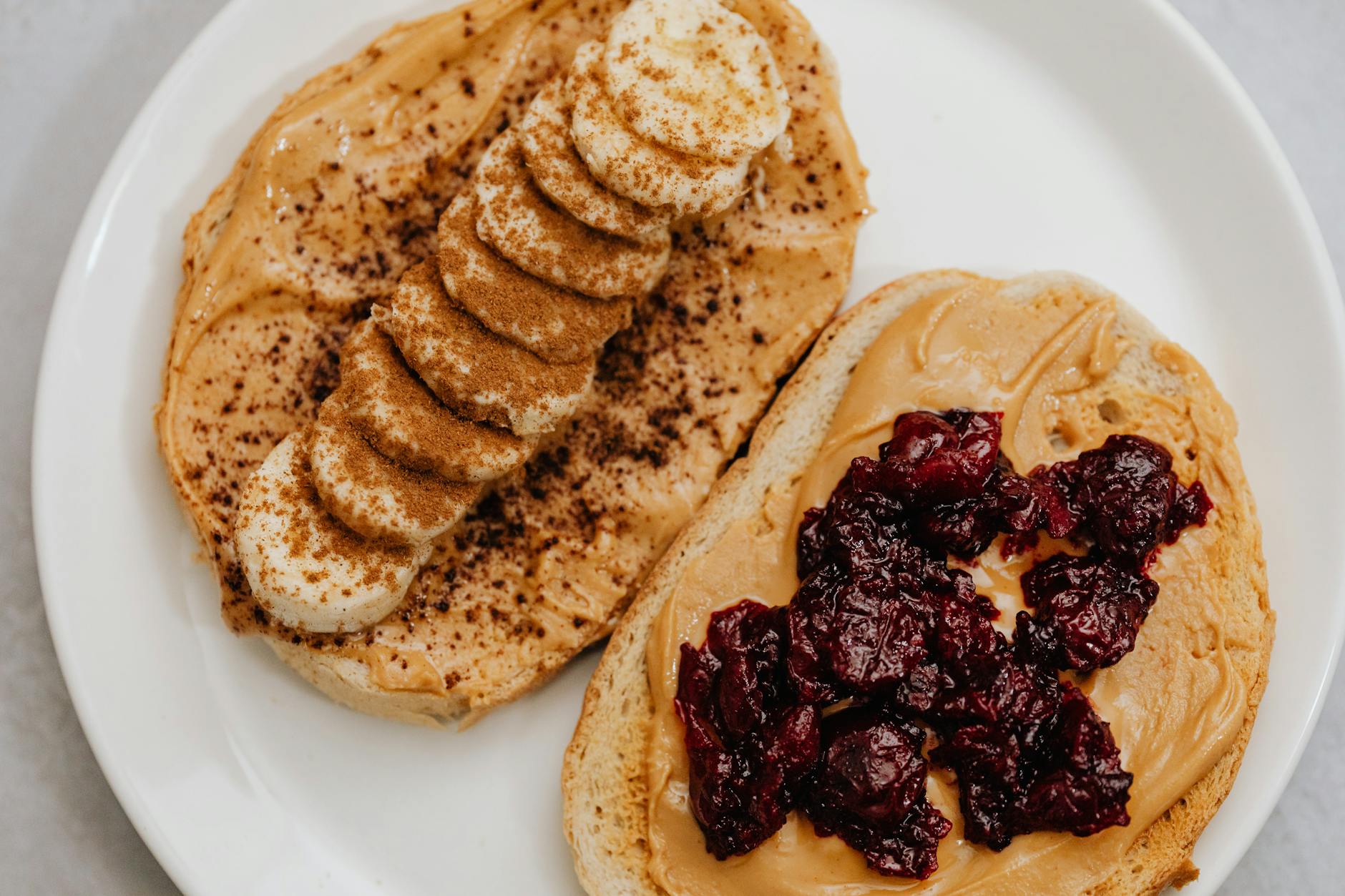
Photo by Kaboompics.com
Satiety and Weight Management
A single serving of Jif peanut butter, usually about two tablespoons, provides 7 grams of protein and 16 grams of fat. This nutrient combination ensures a feeling of fullness and satisfaction, curbing the urge to snack on less healthy, high-carb foods. Managing weight is crucial for diabetics, as excess weight can worsen insulin resistance. Peanut butter’s calorie density means small portions can go a long way in managing hunger without excessive calorie intake.
Additionally, pairing Jif with high-fiber snacks, such as whole-grain crackers or apple slices, can amplify satiety while providing balanced nutrition. The long-lasting energy from peanut butter makes it an excellent option for in-between meals without causing a blood sugar crash.
To dive deeper into the benefits and risks of peanut butter for diabetics, check out Milk and Honey Nutrition’s guide.
Jif peanut butter, when enjoyed mindfully, can be a practical and fulfilling addition to a diabetes-friendly diet. Its mix of healthy fats, protein, and minimal sugar content underscores its role as a versatile snack option.
Potential Drawbacks of Jif Peanut Butter
While Jif peanut butter can be a satisfying snack, there are a few potential concerns for diabetics. Focusing on its composition and caloric density is essential to understanding its limitations.
Added Sugars and Ingredients
Many commercial peanut butters, including Jif, include added sugars and other ingredients that can be problematic for someone managing blood sugar. For instance, regular Jif contains sugars and molasses, which contribute to its 3 grams of sugar per serving. While this may not seem excessive, it’s worth noting that these added sugars can impact glucose levels over time, particularly if consumed in larger quantities or alongside other sugary foods.
Additionally, Jif includes fully hydrogenated vegetable oils, used to enhance texture and shelf stability. While these oils are not trans fats, they are an added component that isn’t nutritionally necessary. Consuming such ingredients repeatedly might limit the natural benefits of peanut butter, particularly for diabetics looking for cleaner, natural options. For a closer look at Jif’s ingredient profile, visit the official Jif product page.
If you’re concerned about added sugars, Simply Jif Peanut Butter offers a lower-sugar version with just 2 grams of sugar per serving, making it a better option for more consistent blood sugar management. For further comparison, check out the Simply Jif facts page.
Caloric Density
Jif peanut butter is calorie-dense, with two tablespoons carrying about 190 calories. This energy-packed punch is due to its high fat content—primarily unsaturated fats, which are healthier but still calorie-heavy. While this level of caloric density is not inherently bad, it does mean careful portion control is a must for diabetics.
Overeating calorie-dense foods, even healthy ones, might lead to unintentional weight gain over time, and weight management is particularly crucial for diabetics. Carrying extra weight can exacerbate insulin resistance and make it harder to maintain balanced glucose levels. To give some perspective, 100 grams of peanut butter typically contains nearly 600 calories, a significant amount if consumed beyond typical serving sizes. You can find more on the caloric breakdown of peanut butter from Verywell Fit.
For those closely monitoring their caloric intake, pairing peanut butter with low-calorie, high-fiber foods such as celery or apple slices offers the right balance without going overboard. Keep in mind that enjoying it in moderation is the key to reaping its benefits without the drawbacks.
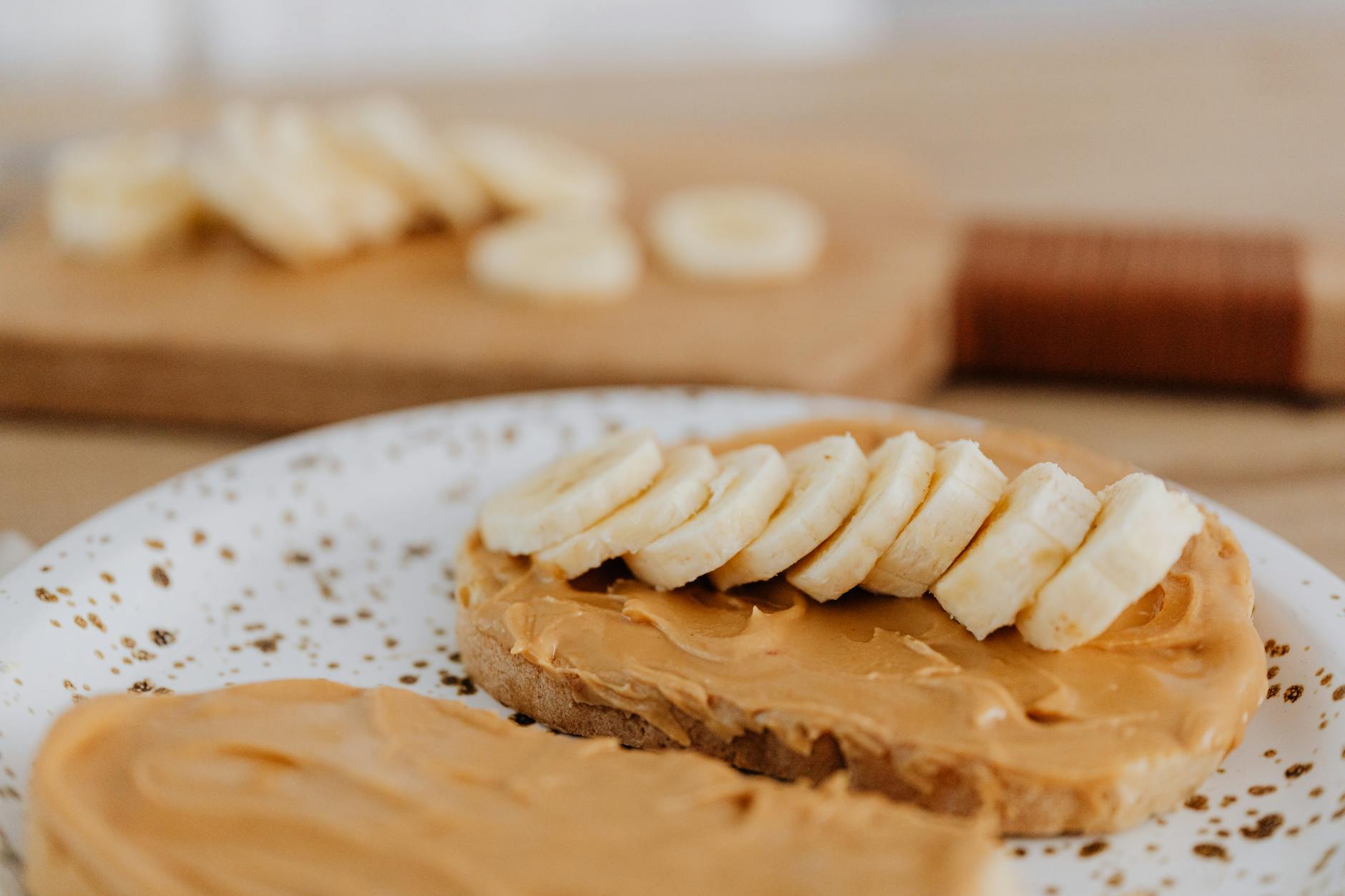
Photo by Kaboompics.com
Portion Control and Serving Suggestions
Managing portion sizes is essential for diabetics, especially when incorporating calorie-dense foods like Jif peanut butter into your diet. Overindulgence, even with healthy foods, can negatively impact blood sugar stability and calorie goals. Here are some tips and ideas to ensure you enjoy Jif peanut butter in ways that are both satisfying and supportive of your health.
Recommended Serving Size
Not all servings are created equal, and sticking to proper portion sizes is crucial when incorporating Jif peanut butter.
- Standard Serving Size: Typically, one serving is 2 tablespoons (about 32 grams), which provides 190 calories, 16 grams of fat, 7 grams of protein, and 8 grams of carbohydrates. While this is the suggested serving, some diabetics may benefit from cutting it down to 1 tablespoon to better align with their dietary goals.
- Control Portions with Visual Cues: If you don’t have a measuring spoon handy, think of 1 tablespoon as roughly the size of a ping-pong ball. This visual reference makes it easier to avoid overeating.
- Mind the Pairing: Jif peanut butter is best used as a complement, not the main event. Pair it with low-calorie, high-fiber options like celery sticks, apple slices, or whole-grain crackers for a balanced snack. By doing this, you’ll feel fuller without needing excessive amounts of peanut butter.
For further tips on portion control tailored to diabetics, visit Everyday Health’s Portion Control Guide.
Ways to Incorporate Jif Peanut Butter
Finding creative, diabetes-friendly recipes that use Jif peanut butter not only keeps meals exciting but also allows you to enjoy its benefits without overdoing it. Here’s how you can integrate it into your day:
- Morning Boost: Add 1 tablespoon of Jif peanut butter to a bowl of cooked oatmeal. The healthy fats and protein will keep you feeling full for hours.
- Snack Time: Spread a thin layer of Jif on celery sticks, cucumber slices, or apple wedges. This pairing ensures a low-glycemic, high-fiber snack that won’t overwhelm your blood sugar levels.
- Smoothie Upgrade: Blend half a tablespoon of Jif with Greek yogurt, unsweetened almond milk, spinach, and a small banana for a nutrient-packed smoothie.
- No-Bake Treats: Mix Jif peanut butter with oat flour and a touch of maple syrup to create healthy energy balls. These are easy to store and perfect for quick, controlled snacks.
- Savory Option: Use Jif to make a light peanut sauce for dipping vegetables or drizzling over grilled chicken or tofu. Balance it with lime juice and soy sauce for a low-carb, flavorful dressing.
For a wide range of healthy peanut butter recipes, explore Walder Wellness’ Peanut Butter Recipe Collection.
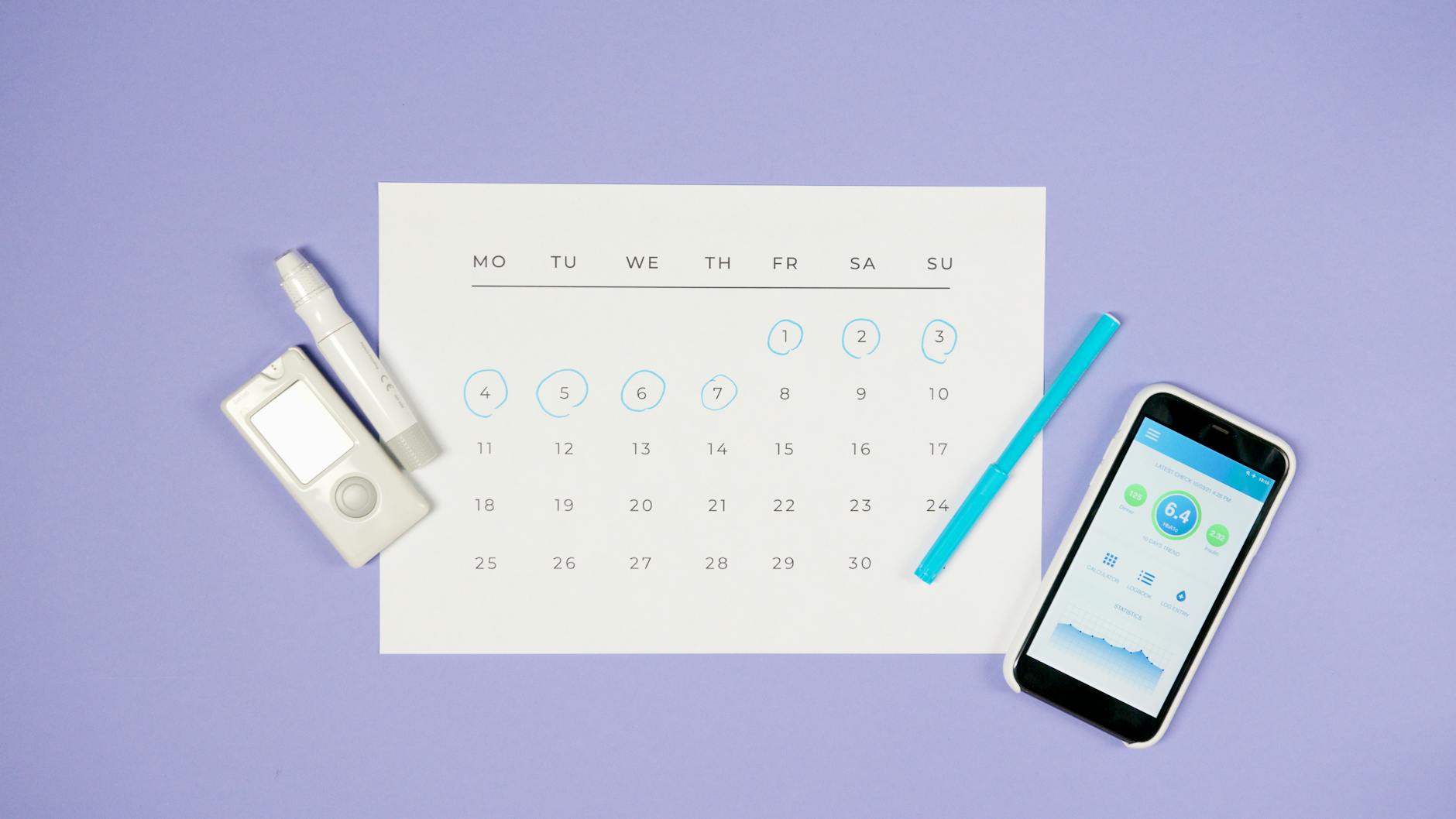
Photo by Artem Podrez
Keeping serving sizes controlled and incorporating Jif peanut butter into your meals mindfully can make it a valuable part of a diabetic-friendly diet. Adjust quantities and pair it wisely to ensure it fits seamlessly into your health routine.
Expert Opinions and Research
Jif peanut butter, like other peanut butter varieties, has sparked discussions among experts regarding its suitability for diabetics. Opinions and studies reveal key insights about its benefits and considerations for managing diabetes effectively.
Diabetes Nutritionists’ Take: Present Views from Diabetes Specialists
Nutritionists specializing in diabetes frequently advocate for peanut butter as a healthy snack option, provided it’s consumed in moderation and from the right sources. So, where does Jif peanut butter fit into the equation?
According to diabetes specialists, natural peanut butter (including reduced-sugar versions of Jif) can help stabilize blood sugar levels due to its high protein and fat content. These nutrients slow digestion, preventing rapid glucose spikes. However, they caution against peanut butters with added sugars and hydrogenated oils, which can counteract these benefits.
Some common tips nutritionists offer include:
- Opt for natural or low-sugar versions: Simply Jif or other natural options with minimal additives are recommended.
- Watch portion sizes: Stick to about 1 tablespoon per serving to avoid consuming too many calories or fats at once.
- Pair with high-fiber foods: Spread Jif on whole-grain crackers or celery to enhance its blood sugar stabilization effects.
For an in-depth dive, a Medical News Today article explains how peanut butter, including Jif, interacts with diabetes management strategies.
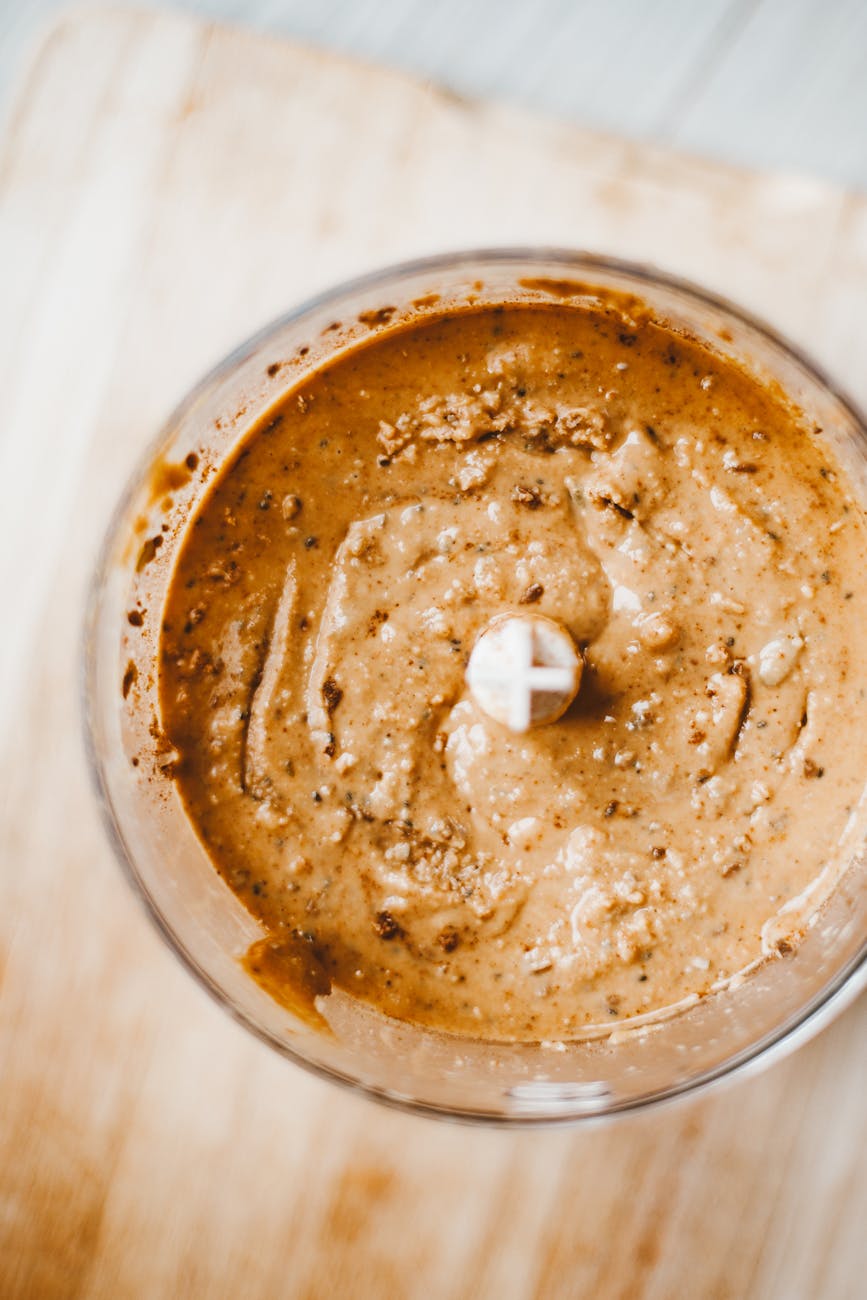
Photo by ROMAN ODINTSOV
Recent Studies and Findings: Include Findings from Recent Studies About Peanut Butter and Diabetes
Scientific studies reinforce the notion that peanut butter can be a healthy addition to a diabetic-friendly diet. A notable research piece published in JAMA highlights how regularly consuming peanut butter may reduce the risk of developing type 2 diabetes. The study observed that women who included peanut butter in their diet had a lower risk of developing type 2 diabetes compared to those who didn’t. The full JAMA study is available here.
Another 2021 study, highlighted on PubMed, found that peanut butter can moderate glucose spikes when consumed alongside high-GI foods like white bread. This finding is crucial for diabetics balancing complex meals, as the nutrient composition of peanut butter offsets the rapid glucose absorption associated with high-GI foods.
Additionally, findings from the National Peanut Board emphasize peanuts and peanut butter’s low glycemic index (GI), making them ideal for maintaining steady glucose levels. The board suggests incorporating peanuts or peanut butter into snacks or meals as part of a balanced diabetic diet.
From expert perspectives to controlled studies, the consensus is clear: peanut butter, including Jif varieties with minimal additives, can play a beneficial role in diabetes management when consumed wisely.
Conclusion: Would Jif Peanut Butter Be Good for a Diabetic?
For diabetics, Jif peanut butter can be a helpful and flavorful addition to a mindful, well-balanced diet. Its low glycemic index (GI), with a score of 14, ensures it has minimal impact on blood sugar levels. When consumed in appropriate portions, it provides a healthy combination of protein and fats, which are effective in slowing down carbohydrate absorption and helping maintain consistent glucose levels.
That said, not all Jif peanut butter variants are the same. While options like Simply Jif are lower in sugar and better suited for diabetics, regular versions might contain added sugars and hydrogenated oils, which require careful attention. You can review the nutritional breakdown of various Jif peanut butter products to make an informed choice on the Jif website.
Key Takeaways for Diabetics:
- Benefits:
- Supports blood sugar regulation due to its low glycemic impact.
- Fosters a feeling of fullness, helping with weight management and minimizing sugar cravings.
- Provides heart-healthy unsaturated fats and essential vitamins like Vitamin E and magnesium.
- Mindful Choices:
- Opt for low-sugar versions like Simply Jif or natural peanut butter for fewer additives.
- Stick to a 1-2 tablespoon portion size to avoid excess calorie intake.
Combining Jif peanut butter with high-fiber foods like celery, apples, or whole-grain bread makes it even more diabetes-friendly. Always check the ingredient label to steer clear of unnecessary additives. For an in-depth guide on how peanut butter can aid diabetes management, explore insights in Milk & Honey Nutrition’s review.

Photo by Artem Podrez




